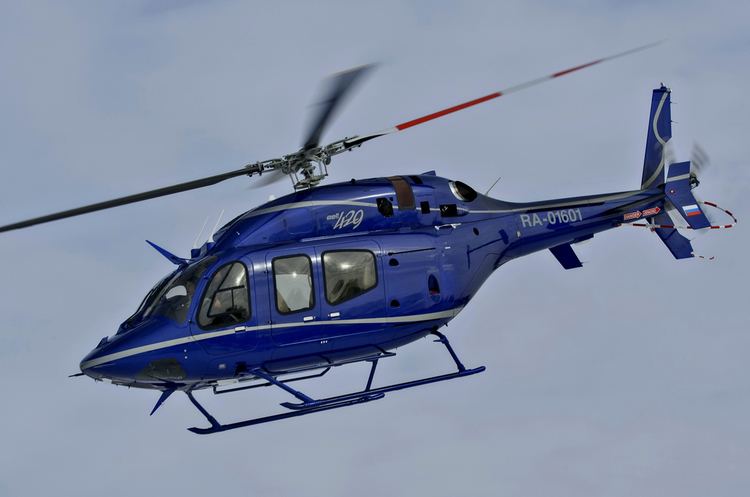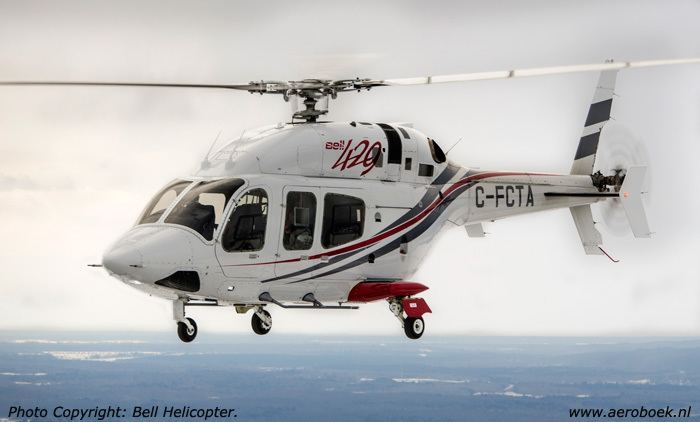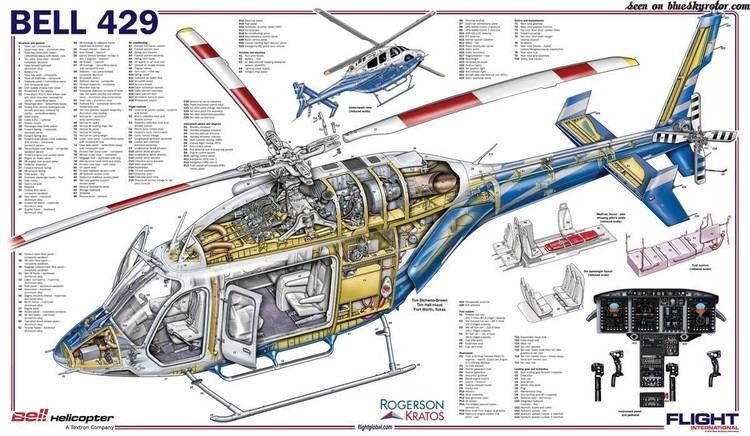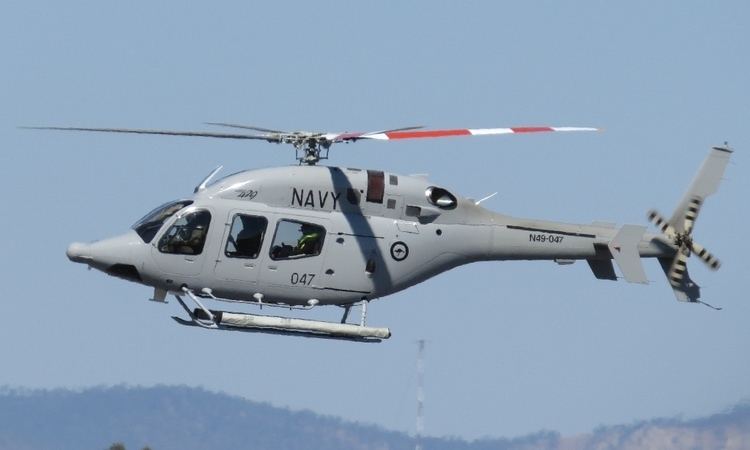Top speed 287 km/h Cruise speed 273 km/h Wingspan 11 m | Range 722 km Length 13 m | |
 | ||
Unit cost 5,000,000–5,000,000 USD (2010) Engine type Pratt & Whitney Canada PW200 | ||
The Bell 429 GlobalRanger is a light, twin-engine helicopter developed by Bell Helicopter and Korea Aerospace Industries, based on the Bell 427. First flight of the Bell 429 prototype took place on February 27, 2007, and the aircraft received type certification on July 1, 2009. The Bell 429 is capable of single-pilot IFR and Runway Category A operations.
Contents

Development

The impetus for developing the Bell 429 came primarily from the emergency medical services (EMS) industry, which was looking for an updated helicopter. The Bell 427 was originally intended to address this market, but the 427's small cabin size would not adequately accommodate a patient litter, and the systems did not support instrument flight rules (IFR) certification. Bell's original concept for the 429 was a stretched model 427 (unveiled as the Bell 427s3i at the 2004 HAI helicopter show), but this still did not provide what Bell and its customer advisers were looking for.

Bell abandoned the 427 airframe and went to its MAPL (Modular Affordable Product Line) concept airframe that was still in conceptual development at the time. The 429 employs the all-new modular airframe concept and the advanced rotor blade design from the MAPL program, but maintains a derivative engine and rotor drive system from the 427. The basic model includes a glass cockpit and is certified for single pilot IFR. Bell partnered with Korea Aerospace Industries and Mitsui Bussan Aerospace of Japan in the helicopter's development.
Bell had flown most of the critical MAPL technology components, using a 427 testbed aircraft, by February 2006. The first completed 429 flew on February 27, 2007. Certification was originally planned for late 2007, but program schedule delays, primarily caused by parts and material shortages common to all aviation manufacturers in that time period, caused the manufacturer to stretch the development timetable. In October 2007 the external configuration was set. In February 2008, Bell had three 429s in flight testing that had completed 600 flight hours. The 429 conducted its high-altitude testing in Colorado and its high-temperature testing in Arizona.

The helicopter received type certification from Transport Canada Civil Aviation (TCCA) on July 1, 2009, and from the Federal Aviation Administration (FAA) by July 7, 2009. EASA certification was announced at Helitech on September 24, 2009. TCCA and authorities in some other countries later approved an increased weight exemption for the aircraft. However, FAA and EASA disagreed with the weight exemption, which had allowed the 429 to operate for the Canadian Coast Guard.

As of June 2009, the Bell 429 had received over 301 orders. The launch customer for the Bell 429 was Air Methods Corporation, the largest medevac provider in the United States. On July 7, 2009, the first customer aircraft (s/n 57006) was delivered to Air Methods (owner) and Mercy One (operator) at Bell's facility in Mirabel, Quebec.
Design
The Bell 429 has a four-blade rotor system with soft-in-plane flex beams. The rotor blades are composite and have swept tips for reduced noise. The tail rotor is made by stacking two, two-blade rotors set at uneven intervals (to form an X) for reduced noise. The combined cabin volume is 204 ft³ (5.78 m³) with a 130 ft³ passenger cabin and 74 ft³ baggage area, with a flat floor for patient loading. A set of rear clamshell doors under the tailboom is optional for easier patient loading in EMS operations.
The 429 has a glass cockpit with a three-axis autopilot (optional fourth axis kit) and flight director as standard. Standard landing gear are skids. A retractable wheel landing gear is optional and adds five kts to cruising speed. The helicopter is a single-pilot IFR Category A helicopter. It is capable of operating with one engine inoperative. The main transmission is rated for 5,000 hours between overhauls and the tail rotor gearbox is rated for 3,200 hours.
Operators
Specifications (Bell 429)
Data from Bell 429 brochure, Bell Helicopter 429 product specifications, Flug Revue Bell 429 page, Aviation Week
General characteristics
Performance
